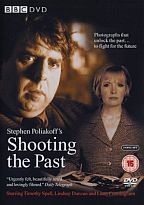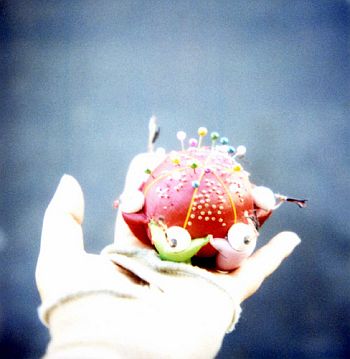
How could I not be drawn to Sarah Seidelmann and Suzi Vandersteen? As designers, they guide clients to find the sweet spot where self-acceptance meets great design. As unabashed emissaries of friendship and play, they teach self-exploration and design recovery through entertainment. They laugh, they whoop it up, and they invite whole people to join the party – all our bits are not only welcome, but necessary.
Suzi and Sarah’s design business is Kitchee Gammi Design Company. Joy Junket is their amusement park of a website.
In what way are you most successfully sensitive?
I think what we do really well is that when we have the initial meeting with the client we carefully gather information regarding what’s important to them in terms of the space we’re designing. Then we interpret all the information and collaborate with them on the design. With each update and new idea presented we watch carefully for reactions and feedback so we know when to make changes in the plan and when to reassure the client.
What or who has inspired you to embrace your sensitivity?
Probably responding to and working with many of our clients who had worked with other artists and designers who didn’t listen carefully to their needs and concerns. We feel design is intensely personal and intimate, and we’re privileged to be asked to work with people in their homes. The fact that we’re both always working towards spiritual progress (not perfection) leads us to listen carefully to everyone we work with, from clients to sub-contractors. We then, of course, take those data points and feed them into the design filter of Kitchee Gammi Design Company, resulting in a design that reflects the collaboration.
What are your eternal fascinations?
Beauty, function, the infinite possibilities inherent in how different people live in their homes, nature, good flea markets (treasure hunting), other businesses that bring their own points of view and have fun doing it, fashion, travel to exotic locales (Istanbul, India, Japan …), the makings of a good party, new food finds – essentially all the creative arts and the infinite offerings of new creations that we see every day.
What quest currently captivates you?
Finding a balance between work, play, and family, as all the variables are constantly changing.
We realize that many people don’t need a COUCH, they need a COACH to help them realign with their heart’s desires, so we’ve added coaching services to our menu. Sarah is currently doing additional coaching training with Oprah’s Martha Beck and is freaked out by how limitless personal transformation is.
What is your favourite kind of help to give?
We love to encourage others to live beautifully on their own terms: Don’t do what we do. Do what you do! And we love to encourage fun and laughter all along the way.
Related Reading: Successfully Sensitive | Dolly Hopkins, Book | A Pattern Language
 I started creating this website within days of being laid off from a job I loved, in May of 2008. I’d been thinking of the website for a while and suddenly, unexpectedly, I had lots of free time to bring it to life, as I processed the lay-off and considered what to do next for income.
I started creating this website within days of being laid off from a job I loved, in May of 2008. I’d been thinking of the website for a while and suddenly, unexpectedly, I had lots of free time to bring it to life, as I processed the lay-off and considered what to do next for income. Over the past two years, I’ve done more than revive my income. I’ve come home, thanks to following the trail of Highly Sensitive Power. The spreadsheet where I track my income shows 16 different sources of income now. My colleagues have become my friends. And my path unwinds before me more clearly than ever.
Over the past two years, I’ve done more than revive my income. I’ve come home, thanks to following the trail of Highly Sensitive Power. The spreadsheet where I track my income shows 16 different sources of income now. My colleagues have become my friends. And my path unwinds before me more clearly than ever. My non-HSP friends help me in ways that make my life easier, like when …
My non-HSP friends help me in ways that make my life easier, like when …








 Dear Sensitive Soul,
Dear Sensitive Soul, There’s relief – the kind of palliative care that shifts us from an uncomfortable moment into a slightly more comfortable moment temporarily – and then there’s Relief with Teeth. Relief with Teeth bites the earth beneath your current stance and makes marks as it makes tracks. There’s no half way about it. You’d better brace yourself for a jolt as those powerful teeth dig in to accelerate.
There’s relief – the kind of palliative care that shifts us from an uncomfortable moment into a slightly more comfortable moment temporarily – and then there’s Relief with Teeth. Relief with Teeth bites the earth beneath your current stance and makes marks as it makes tracks. There’s no half way about it. You’d better brace yourself for a jolt as those powerful teeth dig in to accelerate.

 Start with the first step. Proceed.
Start with the first step. Proceed.